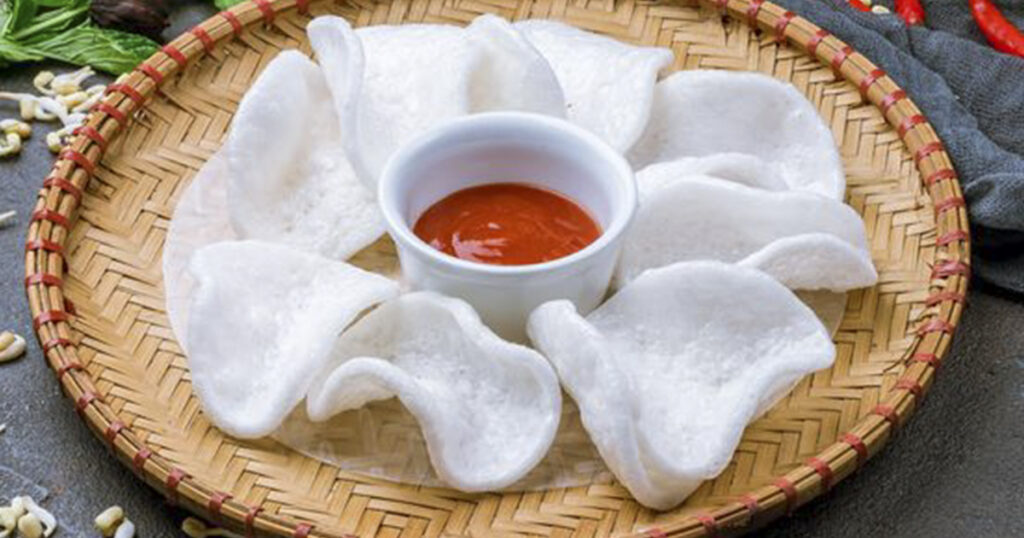Prawn crackers, with their crispy texture and savory flavor, offer a delightful journey for the palate. Originating in Southeast Asia, these popular snacks have been enjoyed for centuries, celebrated for their unique taste and versatility.
Crafted from a mixture of prawn or shrimp paste, tapioca flour, and water, prawn crackers undergo a meticulous process to achieve their signature texture. The dough is carefully seasoned with spices like garlic, onion, and chili before being shaped into thin discs or squares. Whether air-dried under the sun or deep-fried to perfection, the result is a light and airy cracker bursting with the savory richness of prawns.
Prawn crackers come in a variety of flavors and colors, reflecting the diverse culinary traditions of the region. From classic prawn flavor to spicy chili and garlic-infused varieties, each bite offers a symphony of tastes and aromas. These crispy treats are often enjoyed on their own as a snack or served alongside other dishes as an appetizer.
Pairing prawn crackers with dips and sauces further enhances their flavor profile. Sweet chili sauce, soy sauce, or peanut sauce are popular accompaniments, adding depth and complexity to each bite. Prawn crackers also make a crunchy addition to soups, salads, and noodle dishes, providing a satisfying contrast to softer textures.
Beyond their culinary appeal, prawn crackers hold cultural significance in many Southeast Asian countries. They are commonly served during festivals, celebrations, and special occasions as a symbol of prosperity and good fortune. Whether enjoyed at home or in restaurants, prawn crackers evoke feelings of nostalgia and bring people together in shared moments of enjoyment.
In conclusion, prawn crackers offer a delicious journey for the taste buds, with their crispy texture, savory flavor, and cultural significance. Whether enjoyed as a snack, appetizer, or accompaniment to a larger meal, these tasty treats never fail to delight and satisfy cravings.

